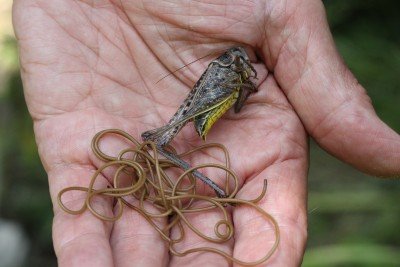
To understand wolf worms, imagine a tiny, hidden guest crashing a party. These parasites, specifically the larvae of *Cuterebra* flies, latch onto their hosts and develop within their bodies, influencing their health and behavior. While it might sound alarming, it’s a part of nature’s complex web. Just as we’ve learned to coexist with various species, these larvae exist within the animal kingdom, contributing to a broader ecological balance.
Let’s take a closer look at the common hosts for these fascinating, albeit creepy, creatures. You might be surprised to find out which animals are on the menu for wolf worms.
1. Rodents: A Common Host
Rodents are among the most frequent hosts for wolf worms. Mice, rats, and squirrels often find themselves entangled with these parasites, especially when they dig into the ground or build nests. The larvae of wolf worms are drawn to small mammals thanks to the moist environments they often create.
When a rodent becomes infected, the larvae usually enter through an open wound or a natural body opening. Once inside, they start to grow, feeding off the host’s body and creating a small cavity. This can lead to significant discomfort or even health issues for the rodent. You might be wondering how a seemingly small creature can cause big problems—just think of it as a misunderstood houseguest making things a bit uncomfortable.
Rodents play a crucial role in the ecosystem, serving as both prey for larger animals and facilitators of plant life through seed dispersal. However, having wolf worms as unwelcome occupants can impact their survival and well-being.
2. Rabbits: A Tasty Treat
Rabbits, with their fluffy coats and twitching noses, are not just adorable; they’re also common hosts for wolf worms. These animals have a tendency to create dens and burrows in grassy fields, making them prime targets for the larvae.
Once a wolf worm larva finds its way into a rabbit, it can cause various health issues. Infected rabbits might show signs of discomfort, lethargy, or even develop visible lumps under their skin. You might think of this scenario like a cozy but cramped apartment that slowly becomes uninhabitable for its resident.
Despite this danger, rabbits continue to serve as vital members of the ecosystem. They are prey for many predators, including foxes and hawks, creating a balanced cycle of life, even when they bear the burden of worms.
3. Birds: The Feathered Hosts
Birds, particularly those that nest in ground burrows or low shrubs, are also susceptible to wolf worms. Nests provide the perfect environment for larvae, which often target young birds, developing in them while they’re still vulnerable.
This relationship can be quite harmful. Infected chicks may suffer from stunted growth or, in severe cases, may not survive to fledge. It’s a harsh reality in the wild, but it’s the circle of life. Observing this, one can draw parallels to how some baby birds might leave the nest too soon due to a predator swooping in, only to face challenges in their journey ahead.
Surprisingly, some birds, like the American Robin, might not only be hosts but also help manage their populations. They can spread the larvae through their droppings, introducing them to new areas. In this way, the relationships in the wild are continually reshaped, with each species playing its part.
4. Canines: Unlikely Hosts
You might not expect it, but domestic dogs, as well as their wild relatives, can occasionally become hosts for wolf worms. This is particularly the case in areas where canines scavenge or dig in places inhabited by infected rodents or rabbits.
When dogs get infested, it might not be obvious right away. The larvae can live under the skin, creating welts that can easily be mistaken for bug bites. Owners might notice their pets scratching more than usual or behaving restlessly. If left untreated, it could lead to infections and more significant health issues.
This scenario reminds us that even our beloved pets are not immune to the challenges of wildlife. Just like in a busy household, where little critters might find their way in, dogs can pick up unwanted guests from their adventures outside.
5. Health Implications for Hosts
The presence of wolf worms in any host can lead to several health issues. While they may not always be deadly, their parasitic nature can cause pain, discomfort, and weakened immune systems. For instance, an infected rabbit may have difficulty moving or finding food, while a bird may struggle to care for its young.
In many cases, the body can fight off these issues, and the host may recover. However, young or weakened animals can succumb to the stress of hosting parasites. This situation can create a ripple effect in the ecosystem, affecting predator-prey dynamics and population sizes in various species.
Understanding these health implications is essential for wildlife enthusiasts and pet owners alike, as awareness can lead to better prevention and management strategies, ensuring that animals remain healthy and thriving.
Wolf worms are just one fascinating aspect of wildlife that often goes unnoticed. By recognizing who their common hosts are—like rodents, rabbits, birds, and even canines—we can appreciate the complexity and balance of nature.
While these parasites may seem scary at first glance, they play a crucial role in the ecosystem. Every creature has its place, and wolf worms, despite their unsettling nature, contribute to the ongoing narrative of life in the wild. So, the next time you’re out in nature, take a moment to consider the intricate relationships that exist all around us, and remember that even the tiniest creatures have a story to tell.
Nature is full of surprises, and understanding these connections can lead to a greater appreciation for the wildlife around us.
